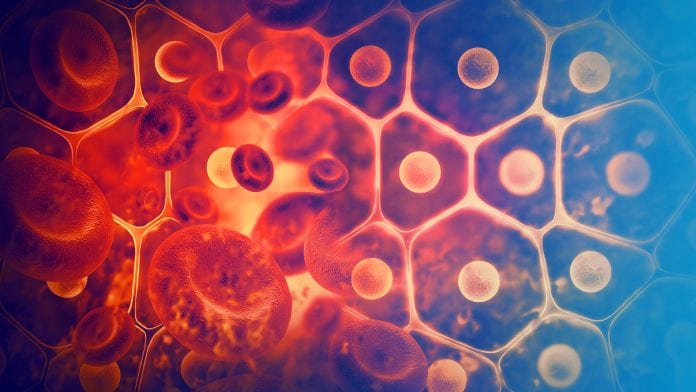
Scientists have identified a non-inherited mutation in blood cells from a patient with GATA2 deficiency that may have prevented bone marrow failure and other clinical manifestations.
For the first time, researchers at the Center for Cell-Based Therapy (CTC) in Ribeirão Preto, Brazil, have identified a non-hereditary mutation in blood cells from a patient with GATA2 deficiency.
GATA2 deficiency is a rare autosomal disease caused by inherited mutations in the gene that encodes GATA-binding protein 2 (GATA2), which regulates the expression of genes that play a role in developmental processes and cell renewal.
An article on the study is published in the journal Blood.
Natural gene therapy
The non-hereditary mutation may have acted as a natural gene therapy which prevented the disease from damaging the process of blood cell renewal. This meant that the patient did not develop such typical clinical manifestations as bone marrow failure, hearing loss, and lymphedema.
The researchers say that the findings pave the way for the use of gene therapy and changes to the process of checking family medical history and medical records for families with the hereditary disorder.
Luiz Fernando Bazzo Catto, first author of the article, said: “When a germline [inherited] mutation in GATA2 is detected, the patient’s family has to be investigated because there may be silent cases.”
The discovery was made when two sons were receiving medical treatment at the blood centre of the hospital run by FMRP-USP, both of which, in post-mortem DNA sequencing, showed germline mutations and GATA2 deficiency diagnosis. The researchers used next generation sequencing to estimate the proportion of normal blood cells in the father’s bone marrow, preventing clinical manifestations of GATA2 deficiency, and of cells similar to his children’s – showing that 93% of his leukocytes had the mutation that protects from the clinical manifestations of GATA2 deficiency.
Possibility of future treatments
Following the sequencing of the father’s T-lymphocytes, the researchers found that the mutation occurred early in their lives and in the development of hematopoietic stem cells, which have the potential to form blood.
They also measured the activity of the blood cells, to see if they could maintain the activity of inducing normal cell production for a long time, by measuring the telomeres of his peripheral blood leukocytes. Telomeres are repetitive sequences of non-coding DNA at the tip of chromosomes that protect them from damage. Each time cells divide, their telomeres become shorter. They eventually become so short that division is no longer possible, and the cells die or become senescent.
The telomeres analysed by the researchers were long, indicating that the cells can remain active for a long time.
The researchers hypothesised that the existence of the somatic mutation in the father’s blood cells, and its restoration of the blood cell renewal process, may have contributed to the non-manifestation of extra-haematological symptoms of GATA2 deficiency such as deafness, lymphedema, and thrombosis.
Professor Rodrigo Calado, a corresponding author of the article, said: “A sort of natural gene therapy occurred in this patient. It’s as if he embodied an experiment and a medium-term prospect of analogous gene therapy treatment in patients with GATA2 deficiency.
“The findings help us understand better how stem cells can recover by repairing an initial genetic defect.”









